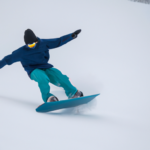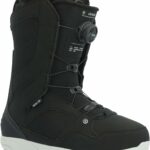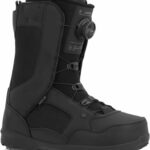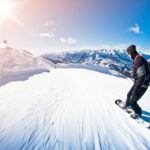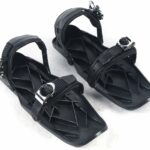So, you’ve finally decided to take on the exhilarating sport of snowboarding and have armed yourself with the best gear. Fit and secure snowboard boots play a critical role in mastering the slopes. But, how do you properly fit your boots into the snowboard? To make sure your adventure is about carving through the snow and not dealing with discomfort and technical glitches, “How To Put Boots In Snowboard?” guides you with tips and expert advice. Experience an adrenaline-fuelled ride with well-fitted boots making all the difference.
Understanding the Basics of Snowboarding
Jumping into the world of snowboarding can seem daunting. There’s the unfamiliar language, unique gear and the seemingly impossible laws of physics to conquer. But fear not! Mastering the basics of snowboarding won’t take long.
Learn about the essentials of snowboarding
Before you tackle the mountainside, let’s get familiar with the essentials of snowboarding. First things first, you need to understand some fundamental snowboarding principles. These include understanding how to balance your body on the snowboard, how to navigate turns and slopes, and, most importantly, how to stop safely and quickly. Once you’ve got these basics down, you’ll be ready to start learning about the all-important gear.
Familiarize yourself with different snowboarding gear
Snowboarding gear can be complex. Boards come in various designs and sizes; boots and bindings are available in a multitude of styles, and diverse outerwear options promise to keep you warm, dry, and stylish. With so many choices, you can easily get overwhelmed. But keep in mind; while gear is important, it’s only a tool that allows you to enjoy the sport. The right equipment will complement your abilities, not replace them.
Importance of perfect boot fit for snowboarding
A common misconception is that snowboarding boots should feel tight, almost like ski boots. That couldn’t be further from the truth. A comfortable, well-fitted boot can make a world of difference on the slopes. It provides better control over your board, minimizes foot pain, and allows you to board for longer. Comfortable and well-fitted boots allow you to shift your weight properly, which is vital for making turns and controlling your speed.
Knowing Your Snowboard Boots
Your boots are the connection between you and your snowboard. Therefore, understanding them is crucial.
Parts of a snowboard boot
A typical snowboard boot is made up of an outer shell, liner, insole, laces, and a heel cushion. The outer shell provides protection and support, while the liner adds comfort and warmth. The laces ensure a snug fit, and the heel cushion plays an important role in absorbing shock.
Various styles and fits of snowboard boots
There are three primary styles of snowboard boots: soft, hard, and hybrid boots. Soft boots provide flexibility and are suitable for freestyle snowboarding. Hard boots are more rigid, making them perfect for alpine snowboarding. Hybrid boots, as the name suggests, are a mix of both.
Choosing the right size for snowboard boots
Selecting the right boot size is crucial. The boots should be sufficiently tight to support your feet without causing pain. Your toes should touch the end lightly when the boots are on, but without pressure or discomfort. Also, your heel should not lift when you bend your knees.
Knowing Your Snowboard Bindings
Snowboard bindings are the connection between your feet and your snowboard.
The role of bindings in snowboarding
Bindings transfer the movements of your feet and legs to your snowboard. Properly fitted bindings can help you maintain balance, control your snowboard, and allow you to perform tricks and jumps efficiently.
Different types of snowboard bindings
There are three main types of snowboard bindings: Strap-In, Step-In, and Hybrid. Strap-In bindings are the most common, providing excellent control and adjustability. Step-In bindings are the easiest to use, allowing you to step in and out quickly. Hybrid bindings combine the best of both worlds.
How bindings connect boots to the board
Bindings are connected to your board using hole patterns drilled into your snowboard. The baseplate of the bindings is aligned with these holes, and screws are used to secure them. Your boots then fit into the bindings, which are adjusted to hold the boots snugly in place.
Positioning Your Boots Properly
Now that you’ve got your boots and bindings figured out, it’s time to position them correctly on the board.
Finding your dominant foot
Before you attach your boots to your board, you need to figure out which foot is dominant. This can be done through a simple test: push someone gently from behind and see which foot they put forward to regain balance. The foot that goes forward will be your leading foot on the snowboard.
Deciding your stance (regular or goofy)
Regular snowboarders ride with their left foot forward, while goofy riders ride with their right foot forward. You can decide your stance based on your dominant foot.
Understanding your preferred binding angles
Determining the right binding angles can be tricky, as it largely involves trial and error. Most beginners start with a duck stance, where both feet are angled away from each other. This stance provides balance and flexibility, allowing you to ride in both directions.
Preparing Your Boots for Insertion
Now that your bindings are ready, it’s time to get your boots ready.
Loosening your boot laces
First, loosen your boot laces to allow your foot to slide in easily.
Fitting your foot comfortably in the boot
Next, position your foot comfortably in the boot. Make sure there’s no discomfort and the fit feels snug, but not too tight.
Tightening the laces
Finally, tighten the laces. Start from the bottom and work your way up. Make sure your heel is pushed into the back of the boot to avoid any empty space.
Mounting Your Boots to the Bindings
With your boots on, it’s time to mount them to your bindings.
Aligning your boots with the bindings
To start, align your boot with the binding. Make sure the heel of your boot slides all the way into the heel cup of the binding.
Securing the straps of the bindings over your boots
Next, secure the straps of the binding over your boots. There’s usually a toe strap and an ankle strap. Tighten each one, ensuring the fit is snug yet comfortable.
Adjusting the fit as required
Lastly, once your foot is in the binding, adjust the fit as necessary. You should be able to wiggle your toes, but your foot should feel snug in the binding.
Checking Your Boot and Binding Fit
It’s imperative to ensure that your boots and bindings fit together perfectly.
Testing the snugness of your boots in the bindings
First, test how snug your boots feel in the bindings. Your boots should have no side-to-side movement and minimal forward and backward movement.
Checking for any discomfort or pressure points
While still secured in your bindings, shift your weight around to check for any discomfort or pressure points. If you experience any pinch points or areas of discomfort, adjust the bindings or consider getting a different size boot or binding.
Making necessary adjustments
If your boots are not fitting correctly into your bindings, make necessary adjustments. Your bindings should be able to accommodate your boots fully without any overhang. Remember, the perfect fit matters to ensure both comfort and control.
Safety Precautions when Mounting Boots
Safety should always be paramount when preparing to snowboard.
Ensure the bindings are tightly secured
Loose bindings can cause accidents. Always ensure your bindings are tightly secured to your snowboard and check them regularly for any signs of wear or tear.
Avoid over-tightening bindings
While bindings should be secure, avoid over-tightening them as it could lead to discomfort, damage to the bindings or even injuries.
Check the condition of your snowboard gear before use
Inspect your snowboard gear before every use. Look for any sign of damage such as scratches, loose screws or worn-out parts, and replace them as necessary.
Understanding Common Mistakes
Understanding common snowboarding mistakes can help you prevent them.
Avoiding incorrect boot size
Wearing the wrong size boot can inhibit your ability to control the snowboard and cause discomfort. Always wear the correct boot size to ensure a comfortable and safe snowboarding experience.
Preventing wrong binding setup
An incorrect binding setup can affect your snowboarding performance. Your bindings should be properly aligned with your natural stance and be appropriately adjusted to fit your boots.
Dealing with improper stance alignment
Improper stance alignment can lead to poor balance and coordination. Always ensure that your stance is comfortable and natural, allowing maximum control over the board.
Maintaining Your Snowboard Gear
Proper maintenance can extend the life of your snowboard gear.
Cleaning your boots and bindings regularly
Regular cleaning can help avoid damage caused by debris and dirt buildup. Use a damp cloth to clean your boots and bindings after each use.
Storing your gear properly
Proper storage can also prolong the life of your gear. Always store your snowboarding equipment in a dry, cool place, away from direct sunlight. All parts should be dry before storage to prevent mildew or rust.
When and why to replace old snowboard gear
Knowing when to replace old snowboard gear is crucial. Well-maintained gear can last a few years, but it’s important to consider replacing gear that’s worn out, doesn’t fit properly, or doesn’t meet your snowboarding needs. After all, your safety and snowboarding experience fundamentally depend on your gear.
Snowboarding holds the promise of thrill and adventure. Understanding your gear, particularly how to properly put your boots in snowboard bindings, is a significant first step. Soar down the mountains with confidence, knowing you’ve secured your boots correctly and safely. Happy shredding!
- What Snowboard Bindings Should I Get? - January 23, 2024
- What Size Screws For Snowboard Bindings? - January 23, 2024
- How To Snowmobile On Water? - January 23, 2024



